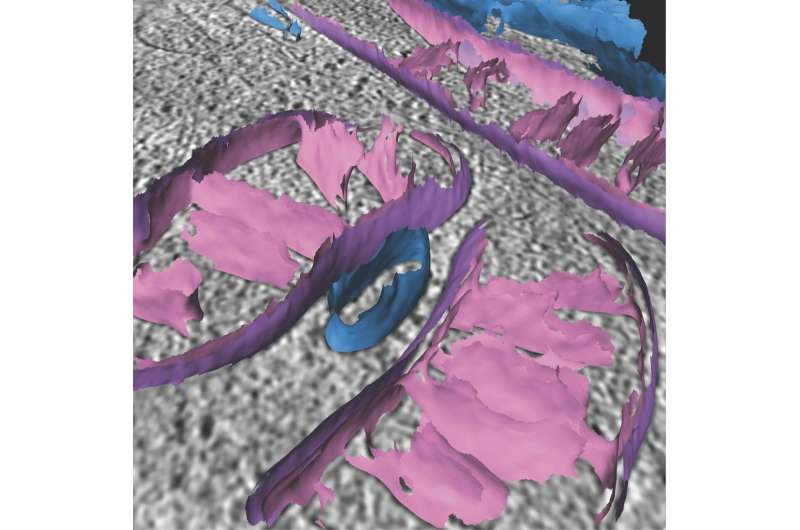Mitochondria's Self-Cleaning Secret: Tiny Vesicles Remove Damaged Parts
Mitochondria, the energy-producing powerhouses of our cells, are constantly working to keep us alive and functioning. But like any hardworking machine, they can wear down and accumulate damage. This damage, if left unchecked, can lead to a range of cellular problems, contributing to diseases like Parkinson's and Alzheimer's.
To protect themselves, mitochondria have developed sophisticated quality control mechanisms. One well-known method is mitophagy, where damaged mitochondria are engulfed and destroyed by lysosomes, the cell's recycling centers. However, recent research suggests there's another, less understood mechanism at play: a process called VDIM formation.
A Paradigm Shift in Mitochondrial Quality Control
Researchers have discovered that during resting states, mitochondria create small vesicles, devoid of outer membrane or matrix, directly from their inner membrane. These vesicles, dubbed VDIMs (vesicles derived from the inner mitochondrial membrane), are formed by the inner membrane herniating through pores created by voltage-dependent anion channel 1 (VDAC1) in the outer membrane.
This process isn't random; it's specifically targeted. Lysosomes, those recycling centers, recognize these herniating inner membrane portions and, with the help of the ESCRT (endosomal sorting complex required for transport) machinery, encapsulate them into VDIMs.
The Importance of VDIMs for Mitochondrial Health
While mitophagy removes entire damaged mitochondria, VDIM formation provides a finer-grained approach to quality control. These tiny vesicles selectively remove damaged sections of the inner membrane, safeguarding the rest of the organelle from localized injury. This localized approach ensures that mitochondria can retain their function and continue producing energy for the cell.
VDIM Formation Under Stress
Researchers found that VDIM formation is particularly enhanced when mitochondria are under oxidative stress, a condition where harmful reactive oxygen species (ROS) build up. This suggests that VDIMs play a crucial role in helping mitochondria cope with stressful conditions and maintain their integrity.
An Interorganelle Communication Pathway
The process of VDIM formation is not isolated. It involves a delicate interplay between mitochondria and lysosomes, highlighting the complex communication networks within our cells. This communication involves calcium signaling, a key regulator of cellular processes.
When ROS activate the TRPML1 calcium channel in lysosomes, calcium ions are released, triggering the formation of VDIMs. This direct communication between lysosomes and mitochondria ensures that the VDIM formation process is finely tuned, responding to the cell's needs and promoting overall cellular health.
VDIM Formation: A New Frontier in Understanding Mitochondrial Dynamics
The discovery of VDIM formation represents a significant step forward in our understanding of mitochondrial dynamics and quality control. This newly identified mechanism sheds light on the complex ways in which mitochondria maintain their integrity and function. It also opens up exciting avenues for future research, potentially leading to new strategies for treating mitochondrial diseases and understanding how aging impacts cellular health.
The research team continues to explore the intricate details of VDIM formation, delving into its precise mechanisms and the factors that regulate it. These investigations promise to unravel further secrets about the inner workings of mitochondria and their role in maintaining cellular health.


















